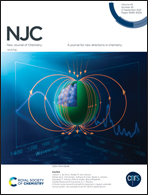Dissection of the potential pharmacological mechanism of Rhizoma coptidis water extract against inflammation in diabetes mellitus via chemical profiling, network pharmacology and experimental validation†
Abstract
Elucidating the therapeutical basis and functional mechanism of traditional Chinese medicine (TCM) is still a challenge faced by researchers since the effects of TCM are always achieved by the interactions of multiple components and multiple targets. In this study, an integrated strategy using a combination of chemical profiling, network pharmacology and in vitro experimental validation was applied to profile the trace constituents of TCM and characterize their functional mechanism, and Rhizoma coptidis (RC) was used as an example. As a result, a total of 55 compounds were identified or tentatively characterized in the water extract of RC, including 22 organic acids, 17 alkaloids, 8 lignans, 2 flavonoids, 4 phenylethanoid glycosides, and 2 other types of compounds. Meanwhile, a potential novel compound (compound 41) – one of the alkaloids – was found and characterized. Notably, organic acids in RC were systematically characterized for the first time. Moreover, the pharmacological targets of the 46 main constituents of RC were predicted using the network pharmacological method, and 234 of them were involved in diabetes mellitus (DM). KEGG analysis indicated that the Rap1 signaling pathway, the cAMP signaling pathway, the PI3K–Akt signaling pathway, and inflammatory mediator regulation of TRP channels were the core signaling pathways for RC in the treatment of DM. Further, the anti-inflammatory effects of RC, correlated with inflammatory mediator regulation of TRP channels, were confirmed by using the LPS-induced RAW 264.7 cell model. Meanwhile, the downstream pathway (NF-kB) of TRP channels was validated by western blot. Our work comprehensively provided the material basis and potential pharmacological mechanism of RC against inflammation in DM; in the meantime, a new insight for elucidating the functional mechanism of TCM was also supplied.



 Please wait while we load your content...
Please wait while we load your content...